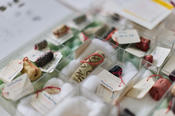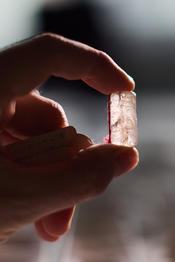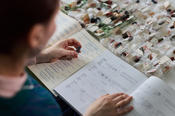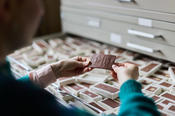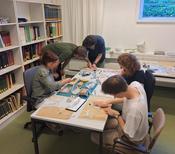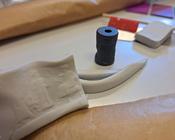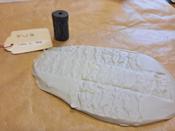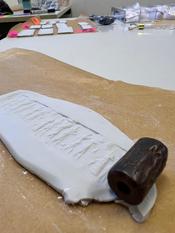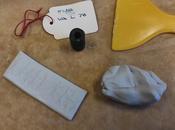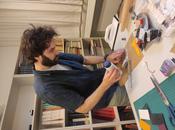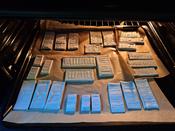Collection of antique cylinder seals and modern seal impressions
The Institute for Near Eastern Archaeology has 161 original cylinder seals, which were acquired by the Freie Universität Berlin in 1967 as a teaching collection through the purchase of a private collection (collector: Erwin Oppenländer). The institute's collection also includes approximately 800 cylinder seal impressions made from plasticine and their silicone moulds.
The Oppenländer collection
The collection of original cylinder seals from the former Erwin Oppenländer collection was acquired by the Freie Universität in 1967. Among the 161 cylinder seals are various works of Mesopotamian stone carving, which were published in an article by Ursula Moortgat-Correns in the Baghdader Mitteilungen in 1968. The original seals were not illustrated in this article and are known only to a small circle of researchers. The original cylinder seals originate from Iraq, Syria and Turkey and date from the 4th to 1st millennium BC.
The Erlenmeyer collection
In addition to these seals, there are approximately 800 modern impressions (in modelling clay) of cylinder seals from the former Erlenmeyer collection in the institute's archive. Hans Erlenmeyer's original collection of Mesopotamian cylinder seals was broken up after his death by three auctions at Sotheby's (1992, 1997, 1998) and scattered around the world. Before the three auctions, these artefacts were transferred to the Institute of Near Eastern Archaeology through the efforts of the former director of the institute, Hans-Jörg Nissen, in order to have the collection, which would otherwise have been lost to research, rolled out. In addition, slides of the original seals were made.
The subsequent cataloguing and photographic recording of all the cylinder seals made it possible to preserve and document the original collection. In order to provide the modern unrollings with the best possible storage conditions at the time, the unrollings were additionally moulded in modelling clay with silicone. The unrolling of the original seal image has thus been preserved in two ways.
Outlook and ongoing work
Together, the two collections offer insights into the imagery of ancient West Asia and enable research into these images in the context of an administrative instrument, the seal. However, these two corpora have so far only been accessible to a very small circle of scholars.
First of all, the existing slides with the images of the original seals, which are no longer available and were made at the Institute before the Erlenmayer Collection was sold, were digitised so that they could be used in the future for teaching and the specialist community in combination with the impressions.
Modern impressions of the original cylinder seals are made and digitally photographed. At present, only parts have been published in one publication (Moortgat-Correns 1968, Die ehemalige Rollsiegel-Sammlung Erwin Oppenländer, Baghdader Mitteilungen 4, 233-297) with black and white photographs. The impressions will be kept together with the original cylinder seals and used for teaching and possible exhibitions.
The Institute's collection of seals offers a wide range of potential uses for teaching and research that could not previously be adequately utilised. In future, the collection will also be accessible to interested parties; temporary exhibitions in display cases in the department and the campus library are planned. The work on the collection is kindly supported by the Coordination Centre for University Collections at the university library of Freie Universität Berlin.
